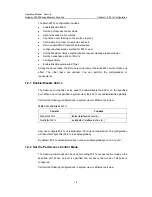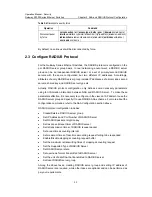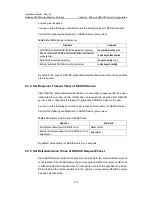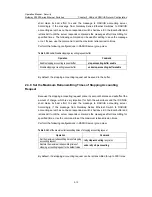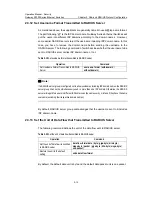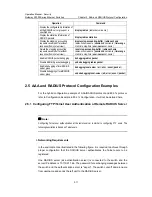
Operation Manual - Security
Quidway S3000 Series Ethernet Switches
Chapter 2 AAA and RADIUS Protocol Configuration
2-5
Table 2-2
Configure relevant attributes of ISP domain
Operation
Command
Specify the adopted RADIUS server group
radius-scheme
radius-scheme-name
Restore the adopted RADIUS server group to the
default RADIUS server group
undo radius-scheme
Specify the ISP domain state to be used
state
{
active
|
block
}
Set a limit to the amount of supplicants
access-limit
{
disable
|
enable
max-user-number
}
Restore the limit to the default setting
undo access-limit
Set the idle
idle-cut
{
disable
|
enable
minute
flow}
By default, after an ISP domain is created, the used RADIUS server group is the default
one named “default” (for relevant parameter configuration, refer to the Configuring
RADIUS section of this chapter).,the state of domain is
active
, there is no limit to the
amount of supplicants ,and
disable
the idle-cut configure.
2.2.3 Create a Local User
A local user is a group of users set on NAS. The username is the unique identifier of a
user. A supplicant requesting network service may use local authentication only if its
corresponding local user has been added onto NAS.
Perform the following configurations in system view
Table 2-3
Create/Delete a local user and relevant properties
Operation
Command
Add local users
local-user
user-name
Delete all the local users
undo local-user all
Delete a local user by specifying its type
undo local-user
{
user-name
|
all
[
service-type
{
lan-access
|
ftp
|
telnet
|
ssh
} ] }
By default, there is no local user in the system.
Please note that all S3000 series switches support SSH except S3026.
2.2.4 Set Attributes of Local User
The attributes of a local user include its password, state, service type and some other
settings.
Perform the following configurations in system view.

